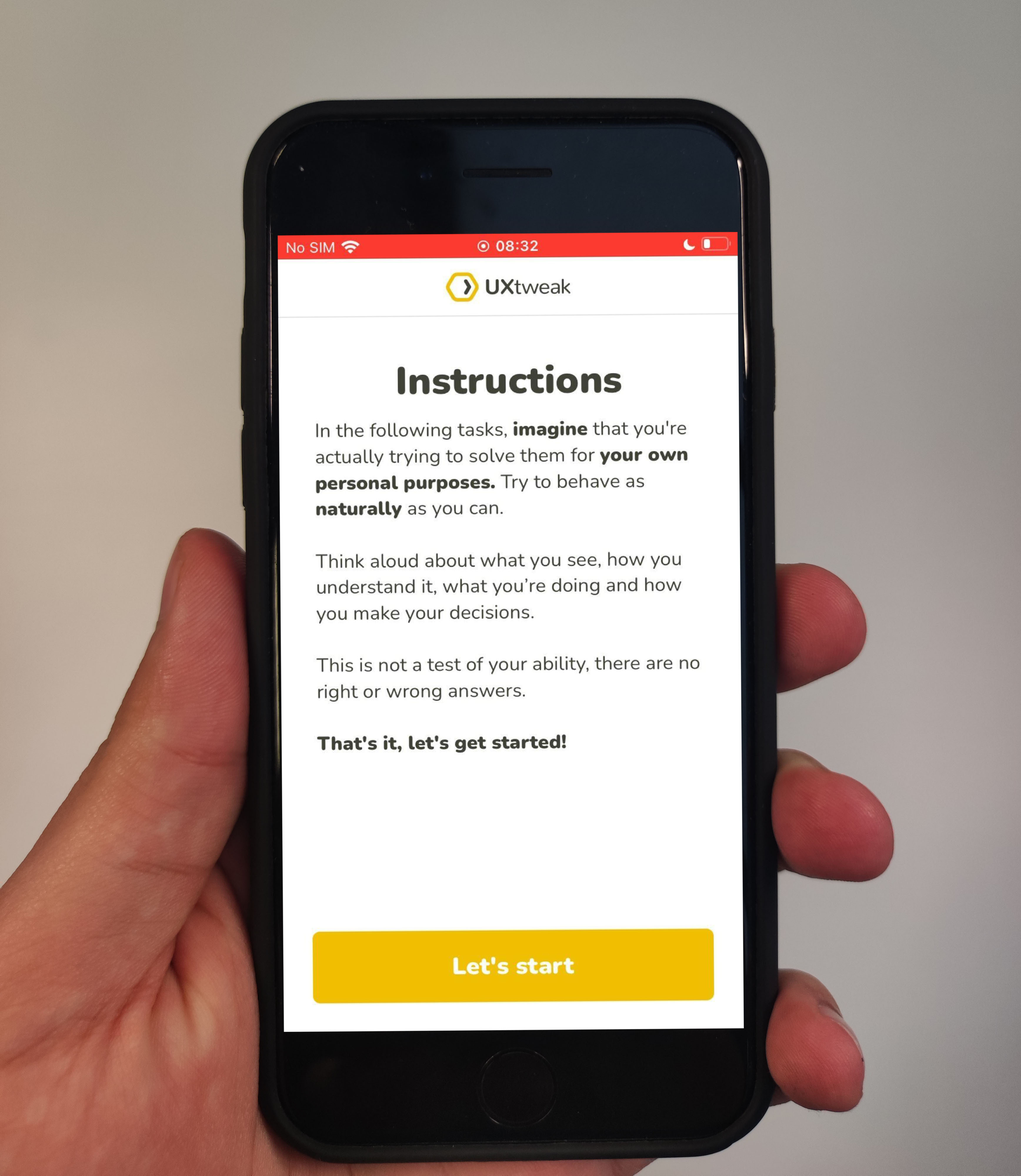Key takeaways
🔧 Product optimization is all about fine-tuning a product to meet user needs while achieving business goals.
🔎 While both product optimization and product discovery are quintessential parts of the product development life cycle, they are different processes that serve distinct purposes.
💡 Product optimization equals data-driven decisions, happier users, and product growth.
If you are a product owner looking for ways to move the needle with your digital product, this is for you.
To stay relevant, drive growth, and remain top of mind, product teams must now adopt a mindset of continuous improvement and, in particular, product optimization.
In this article, we’ve gathered everything you need to know about product optimization—from the benefits of continuous improvement to proven frameworks that enhance user experience.
You’ll also find our top tips to help you successfully optimize your product and stay ahead of the competition.
Let’s begin!
What is product optimization?

Product optimization is the process of fine-tuning a product to meet the ever-evolving needs of users while achieving business goals.
It involves collecting data and user insights as well as market considerations in order to make informed decisions that will drive product growth.
Product optimization vs product discovery
While both product optimization and product discovery are essential parts of the product development cycle, they are different processes that serve distinct purposes.
On one hand, product discovery is the process of identifying user problems before a product is built.
On the other hand, it laser focuses on enhancing a product that already exists on the market, and it occurs after the launch.
Importance of product optimization
If you are a product owner or part of a product team, here are the three key reasons why you should adopt product optimization into your workflows:
✅ Benefit 1: Data-driven decisions
The biggest benefit of product optimization is that it permits data-driven decisions that rely on user insights.
Optimization can massively help teams laser-focus on the product enhancements that will have a bigger impact.
✅ Benefit 2: Happy users
Another huge advantage of continuous improvement through product optimization is happier users.
Product optimization is key in ensuring that the product caters to the needs of its users and that users have a positive experience throughout.
📌 Example: simplifying your checkout process can have a massive impact on user engagement and loyalty.
✅ Benefit 3: Growth
Ultimately, a product based on data-driven decisions that delights its users leads to enhanced conversion rates and overall growth while reducing churn rates.
📌 Example: optimizing the loading speed of your payment page can boost completed purchases and lead to revenue growth.
🌟 Did you know?
Companies that fully optimize product management can see an average profit increase of 34% and cost savings of about 23% by reducing resources spent on products likely to fail.
This can translate into a total financial gain exceeding 5,000% ROI in some cases, demonstrating massive returns on investment in optimization efforts.
Commonly used product optimization frameworks

Here are some of the commonly used product optimization frameworks that can help your team prioritize and implement product enhancements effectively:
📍 JTBD (Jobs To Be Done) framework
The JTBD framework focuses on the core tasks that the user needs to complete when using a product.
This product optimization framework is suited for when product teams need to prioritize features and uncover opportunities based on user goals.
The main benefit of this approach is that it provides a deep understanding of user behavior. However, it requires qualitative research, which can generally be time-consuming.
To use JTBD, conduct in-depth user interviews to understand the tasks users are trying to complete. Once you have a list of those, analyze and prioritize the features that need optimization to support these tasks.
📍 Design thinking
Design thinking is a user-centered approach to product optimization that focuses on empathy, ideation, and iterative prototyping.
This product optimization framework enables teams to deeply understand user needs before coming up with solutions.
Design thinking is ideal for complex products that require creative and innovative solutions. One of the key benefits of this approach is that it ignites innovation. However, it might be difficult to scale for larger teams.
To apply this framework, start by empathizing with your users to understand the pain points, define the problem, brainstorm ideas, and ‘prototype’ them to test them with your users.
📍 HEAT framework
The HEAT framework evaluates product performance based on happiness, engagement, adoption, and task success. The heat framework is best for continuous optimization and monitoring changes after product updates.
The key benefit here is that the metrics are easy to track. However, the framework focuses mainly on quantitative data, which might result in overlooking qualitative insights.
To use HEAT, simply collect data on each of those four metrics through surveys and session recordings, and analyze the data to identify areas for improvement.
🔽 Try UXtweak’s survey in action and session recording tools yourself!
📍 CRO (Conversion Rate Optimization) framework
The conversion rate optimization framework is laser-focused on optimizing the percentage of users who complete a desired action on an interface, such as signing up for a newsletter.
CRO is well-suited in situations where the product optimization goal is to increase conversions.
The main benefit of this framework is that it has a direct impact on business goals, but it may fail to address long-term user loyalty.
To apply CRO, start by running A/B tests on key features of your product, such as checkout processes, analyzing results, and implementing the changes of the winning variation.
📍 Objectives and key results (OKRs)
OKRs are another product optimization framework for tracking measurable goals. OKRs are ideal when you need to align business goals with the tasks of the team and track progress over time.
The key benefit here is that it provides clear, measurable targets, however, it should be used with caution, as setting unrealistic goals can lead to frustration.
To apply this framework, begin by clearly defining your objectives and how those are linked to your company’s goals. Finally, set key results that will indicate progress and success, and check in regularly.
📍 RICE model
Last but not least, the RICE model is a prioritization framework based on four criteria: reach, impact, confidence, and effort.
RICE This is a great tool for product owners and product managers who are tasked with making informed prioritization, and is particularly handy when managing a backlog of potential features.
RICE offers a holistic approach to decision making; however, this approach might lack long-term strategic alignment.
To apply this framework, assign a score to each feature based on how many users it will affect, how much it will improve the product, how confident you are that it will, and what resources we need to put into it to achieve it.
Finally, use these scores to prioritize the features in question.
💡 Pro Tip
Use the RICE model to bring objectivity to your feature prioritization—just make sure to balance quick wins with long-term strategic goals for maximum impact.
How to collect customer feedback for product optimization

Customer feedback is the alpha and the omega of product optimization. Here are some key methods to get it:
💡 Customer interviews
Customer interviews are a great way to get in-depth qualitative data and better understand customer behaviors and pain points.
User interviews are gold when it comes to uncovering the ‘why’ behind certain interactions or behaviors, allowing product teams to dive deeper into the user experience.
They are also particularly handy for uncovering untapped product improvements.
🌟 Want to include user interviews in your UX research?
Try UXtweak’s Live Interviews!
Seamlessly schedule, recruit, conduct, and analyze your all user interviews.
⬇️ Learn more about the feature and be the first to try it!
💡 A/B testing
Performing an A/B test is another handy product optimization technique to have in your arsenal.
A/B testing involves comparing two or more versions of the same design to find the version that performs better according to your set metrics.
This methodology allows you to split the traffic on the page you are testing and make data-informed decisions on which version works best.
Continuous data-driven product optimization, including real-time monitoring and A/B testing, can increase revenue by 5-7% and improve conversion rates by approximately 20%.
💡 Usability testing
Usability testing allows you to get juicy insights that you can utilize throughout your product optimization journey. Usability helps you uncover areas of the product that are working well as well as areas that are underperforming.
To maximize the benefits of this methodology, make sure to recruit participants who fall under your target audience and ask them to perform a task on your website or app.
You can then record their reactions and draw invaluable insights about your product’s usability, desirability, and effectiveness.
🔽 Try it yourself with UXtweak’s usability testing tools!
💡 Focus groups
The focus group method is another great tool in a product professional’s arsenal. This methodology allows for the discovery of different user perspectives in one test.
By tapping into this method, product owners have an unmissable opportunity to observe and take stock of the shared opinions, but also pinpoint the elements of disagreement within the group.
Ultimately, this method can reveal invaluable user insights in a social context.
💡 Surveys
Surveys are a quick and easy way to collect user feedback that can drive your product optimization. There are different types of surveys out there, depending on the type of insights that you are looking to get.
User surveys can be created and sent either via email or with the aid of online survey tools, and they can include questions about preferences, general user experience, or even suggestions.
💡 Heatmaps & session recordings
Heatmaps and session recordings are two great methods to further drill down into the nuances of user behavior, understand how your product aligns with those, and optimize when needed.
Heatmaps offer a visual representation of how users interact with an interface by monitoring their scrolling and clicking activities.
On the other hand, session recording is about monitoring user behavior overall to get an understanding of the elements that draw user attention.
💡 Pro Tip
Combine heatmaps and session recordings to uncover hidden usability issues—visual trends show what users do, while session replays reveal why they do it.
The best software for product optimization

UXtweak is a powerhouse that can transform the way you gather customer feedback. From interviews and usability testing to heatmaps, session recordings to surveys, and everything in between, this platform helps product teams uncover untapped opportunities for product optimization.
Features:
- Live interviews: Talk to your customers to discover their motivations, preferences, and jobs-to-be-done, and use this data for better decision making.
- Moderated testing: Observe your customers interacting with your product and identify opportunities for improvement.
- Usability testing: Conduct in-depth usability studies to identify and address user pain points.
- Surveys and feedback: Gather qualitative insights through customizable surveys and feedback forms.
- Session recording: Analyze user interactions with session recordings to understand behavior patterns.
- Card sorting & tree testing: Optimize information architecture by evaluating how users categorize and navigate content using proven UX research methods.
Reviews:
With a 4.8/5 Capterra rating, users command UXtweak for its comprehensive feature set and intuitive interface, highlighting its effectiveness in improving user experience strategies.
Pricing:
- Free plan: Available with basic features.
- Paid plans: Starting at $99/month, offering advanced functionalities and increased usage limits.
Product optimization examples
Here are some top-notch product optimization examples to get inspired from
Netflix
Netflix is a product that swears by product optimization. The product teams at Netflix fine-tune their product offering by running thousands of A/B tests, such as testing variations of thumbnails.
Amazon
Product optimization is at the top of Amazon’s product team’s mind. Amazon continuously refines its product recommendation algorithms, as well as fine-tunes its checkout process to increase conversion rates.
Shopify
Shopify is another stellar example of ongoing product optimization. The product team at Shopify continuously gathers feedback from users to fine-tune their onboarding experience and support tools, which leads to reduced churn rates.
Final tips
Here are some of our top tips when it comes to product optimization:
🔁 Creation of feedback loops
Creating feedback loops can help you ensure that you have the processes and systems in place to collect, analyze, but also act on user feedback throughout the lifecycle of the product.
🎯 Prioritization based on impact
Make sure that feature prioritization is based on impact. To do so, use frameworks like RICE or MOSCOW to laser-focus on updates that will deliver the most value.
🔧 Use of the right tools
Investing in the right tools can make or break the success of your product optimization. Make sure you use comprehensive product research platforms to streamline the entire process.
Wrapping up
Product optimization is the alpha and the omega for the creation of a successful product.
Choose the product optimization framework that best suits the unique needs of your product and ensure that you have the right systems in place for collecting, analyzing, and acting on feedback continuously.
No matter which approach you decide to use, don’t forget to always collect a combination of quantitative and qualitative data for more actionable and meaningful product updates and prioritize updates based on impact!
If you’re looking for a powerful, all-in-one platform to support this process, UXtweak has you covered.
It offers everything you need to make smarter product decisions—from usability testing and session recordings to surveys and interviews. Try it for free today!











📌 Example: the results of an A/B test can inform design decisions, reducing development time and ensuring that changes align with user needs.